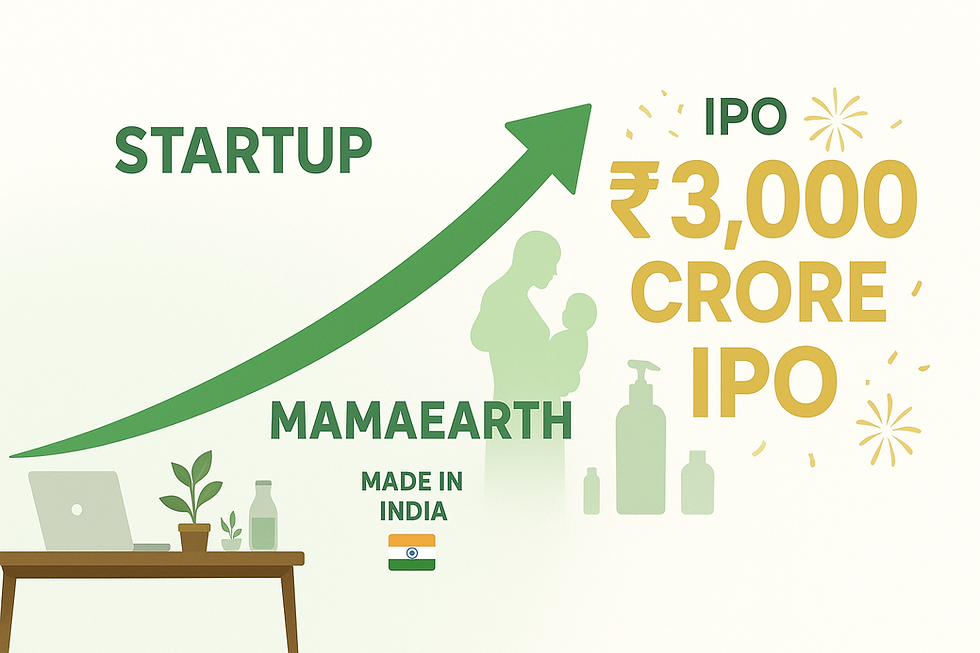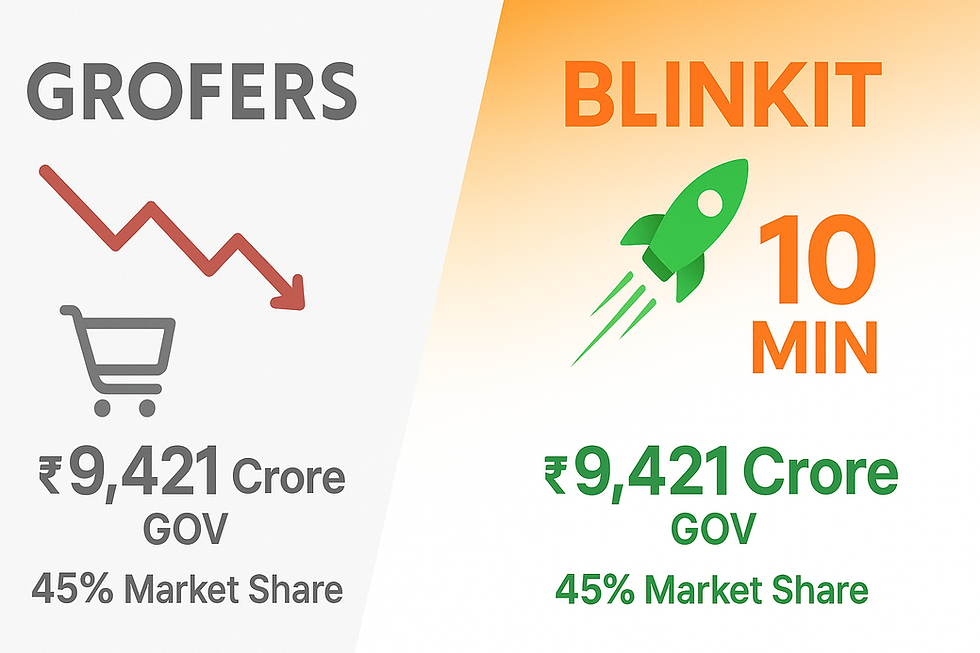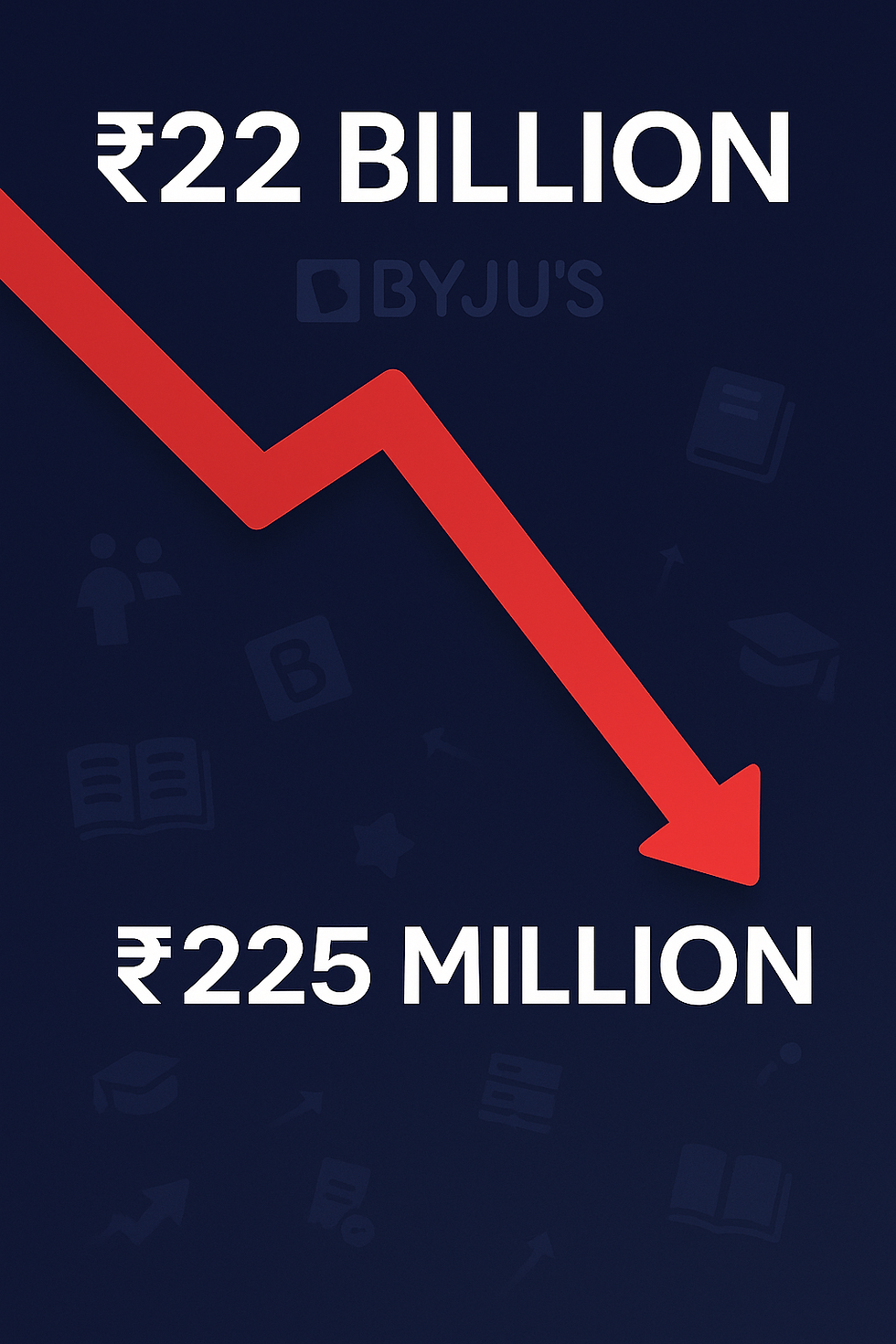From Kitchen Table to ₹3,000 Crore IPO: How Mamaearth's Toxin-Free Revolution Beat Unilever at Their Own Game
- Nayan Tomar
- Aug 21
- 5 min read

Reading Time: 5 minutes
From a startup founded at their kitchen table to India's largest digital-first beauty and personal care brand with a ₹3,000 crore IPO - Mamaearth proved that Indian mothers trust homegrown "toxin-free" positioning more than multinational "clinically proven" claims, demonstrating how fear-based marketing backed by ingredient transparency can disrupt established categories when combined with authentic storytelling and strategic digital distribution.
The Fear-Based Marketing Revolution: When Toxin-Free Becomes Mainstream
Mamaearth's breakthrough insight was identifying that modern Indian parents, especially millennial mothers, feared chemical exposure in baby products more than they trusted established brand promises. The company built their entire marketing strategy around addressing these toxin-related anxieties that traditional brands like Johnson & Johnson and Himalaya either ignored or inadequately addressed.
The psychological positioning proved powerful because it tapped into parental protection instincts. While established brands marketed functional benefits like "gentle cleansing" or "moisturizing," Mamaearth marketed peace of mind through "toxin-free" promises that directly addressed mother's fears about harmful chemicals affecting their children's health.

Mamaearth positioned itself as a pioneer in toxin-free, environmentally friendly skincare and personal care products, carving out a significant niche through consumer trust, transparency, and modern marketing approach. This positioning allowed them to charge premium prices while competing against established multinational brands with significantly larger marketing budgets.
The fear-based approach worked because it shifted the conversation from price comparison to safety comparison. Parents who might choose cheaper alternatives for themselves willingly paid premiums when convinced that expensive products provided superior safety for their babies. This emotional leverage transformed Mamaearth from just another personal care brand into a safety-first necessity.
The validation came through rapid market acceptance: Mamaearth achieved over 2.5 million customers with a growing social media following of more than 1.5 million, becoming one of India's fastest-growing brands. These numbers demonstrated that toxin-free positioning resonated powerfully with target demographics despite higher price points compared to traditional alternatives.
Ingredient Transparency as Competitive Differentiation: When Labels Become Marketing Tools
Mamaearth's genius lay in transforming ingredient transparency from regulatory compliance into primary marketing differentiation. While traditional personal care brands hid complex chemical names in fine print, Mamaearth prominently featured natural ingredient lists as key selling points, making transparency itself a competitive advantage.

The Transparency-First Communication Strategy
Mamaearth offers 300+ safe and gentle baby care, body care, skincare, and hair care products made with Goodness of Nature, but their marketing strategy focused on what they excluded rather than what they included. The "free from" messaging (sulfate-free, paraben-free, mineral oil-free) created powerful differentiation that established brands struggled to match without reformulating entire product lines.
The ingredient transparency approach worked because it educated customers while building trust simultaneously. Mamaearth's marketing content included ingredient explanations, safety certifications, and natural sourcing stories that transformed product labels into educational marketing materials. This approach built informed customer loyalty rather than just brand preference.
Mamaearth became India's largest digital-first BPC brand in terms of revenue by making ingredient transparency central to their value proposition. The strategy proved that educated customers become more loyal and less price-sensitive when they understand and trust product safety claims.
Authentic Bollywood Celebrity Endorsements
Unlike traditional celebrity marketing that focused on glamour and aspiration, Mamaearth secured celebrity endorsements from actresses like Shilpa Shetty and Kriti Sanon who were mothers themselves or known for fitness and natural lifestyle choices. This authentic alignment between celebrity personas and brand values enhanced credibility rather than just visibility.

The celebrity strategy worked because the endorsements felt genuine rather than transactional. When Shilpa Shetty endorsed Mamaearth, audiences believed she actually used the products for her own family because the brand aligned with her publicized parenting philosophy and natural wellness advocacy.
This authentic celebrity positioning created social proof that mass-market advertising cannot replicate. Mothers who aspired to celebrity parenting standards trusted recommendations that seemed personally motivated rather than commercially driven, generating conversion rates significantly higher than traditional beauty advertising approaches.
Digital-First Distribution: Amazon Strategy That Bypassed Traditional Retail
Mamaearth's distribution innovation involved launching primarily through Amazon India rather than traditional retail channels, allowing them to build brand equity and customer base without the inventory and placement costs that typically prevent startup brands from competing with established players.
The Amazon-First Growth Strategy
The digital distribution approach provided multiple competitive advantages. Amazon's search algorithm favored products with strong reviews and high conversion rates, allowing Mamaearth to compete on customer satisfaction rather than advertising budgets. Their toxin-free positioning attracted customers specifically searching for natural alternatives, creating high-intent traffic that converted better than mass-market advertising.

Amazon's platform also enabled sophisticated customer education through detailed product descriptions, customer reviews, and Q&A sections where Mamaearth could communicate ingredient benefits and safety information. This format suited their transparency-first marketing approach better than traditional retail displays with limited space for educational content.
The data advantages proved crucial for marketing optimization. Amazon's analytics allowed Mamaearth to understand customer search behavior, seasonal patterns, and product preferences with precision that traditional retail partnerships cannot provide. This insight enabled marketing campaigns and product development decisions based on actual customer behavior rather than demographic assumptions.
Social Media and Mom Blogger Partnerships
Mamaearth built powerful social media presence through strategic partnerships with mom bloggers and parenting influencers who authentically reviewed and recommended products to engaged audiences. These partnerships generated user-generated content and authentic testimonials that carried higher credibility than traditional advertising.

The influencer strategy focused on education rather than promotion. Mom bloggers created content explaining ingredient benefits, product usage tips, and safety information that served as marketing while providing genuine value to their audiences. This approach built community around Mamaearth brand rather than just product awareness.
Strategic Lessons: Building Trust-First Brands in Regulated Categories
Mamaearth's growth from kitchen table startup to India's largest digital-first beauty brand offers clear frameworks for disrupting established categories through transparency-focused marketing and fear-based positioning strategies.
First, identify unaddressed customer fears in established categories and build marketing positioning around safety rather than benefits. Mamaearth succeeded because they addressed toxin concerns that traditional brands ignored, creating emotional differentiation that justified premium pricing and brand switching.
Second, use transparency as competitive advantage when established players benefit from complexity. Ingredient transparency marketing works in categories where traditional brands hide behind complex formulations and scientific claims that customers cannot evaluate independently.
Third, leverage digital distribution channels to compete on customer satisfaction rather than marketing budgets. Amazon-first strategy allowed Mamaearth to build brand equity through reviews and search optimization rather than competing directly with multinational advertising spending.
The broader insight for marketers: fear-based marketing succeeds when combined with transparent communication that builds genuine trust rather than manipulative anxiety. Mamaearth's success came from addressing real parental concerns through verifiable safety claims, not from creating artificial fears through misleading messaging.

However, recent challenges show the sustainability question: since mid-September 2024, Mamaearth's stock price plummeted by 40%, indicating that even successful marketing strategies require continuous innovation and operational excellence to maintain market leadership in competitive beauty categories.

.png)



Comments